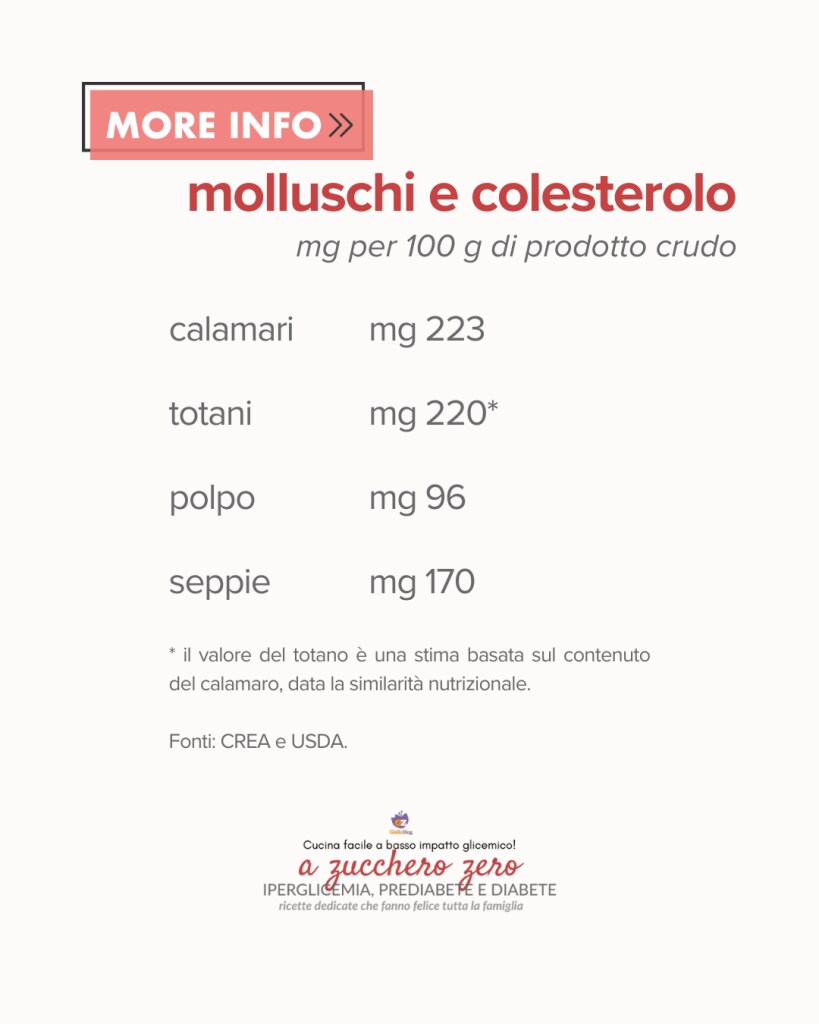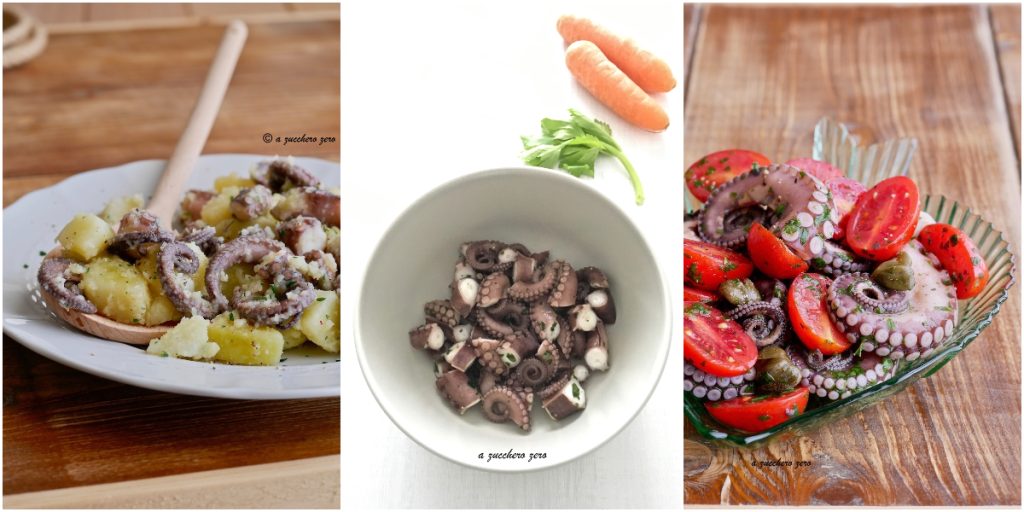A step-by-step tutorial on how to cook octopus soft and tender to perfection with whole skin to prepare an octopus salad like the one you enjoy at a restaurant.
Cooking in an IMCO pot or a regular pot.
Forget the cork stopper!
Here you will find practical tips for a restaurant-quality result.
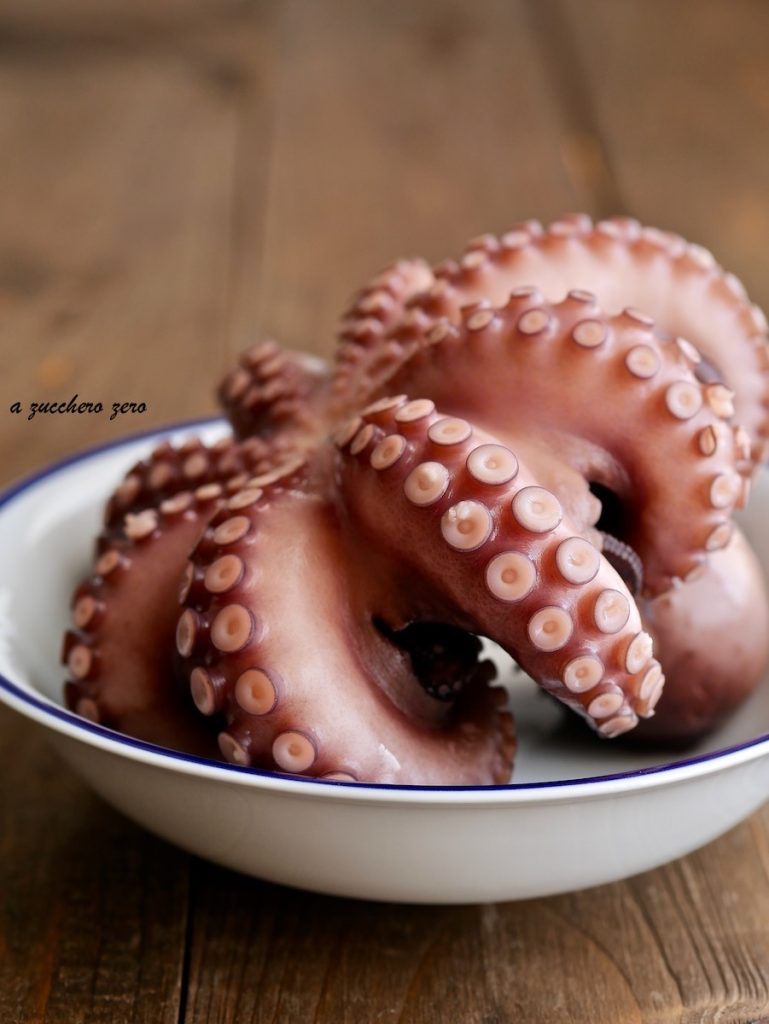
- Difficulty: Easy
- Cost: Medium
- Preparation time: 10 Minutes
- Portions: 2 People
- Cooking methods: Boiling
- Cuisine: Italian
Ingredients
- octopus
- water (plenty)
- 1 shot glass red wine
- leaves bay leaf (if available)
Suggested Tools
- 1 Pot IMCO or regular
- Knife
- Cutting Board
Tips for Cooking Octopus
A couple of tips for cooking octopus that have nothing to do with the famous cork stopper:
– freezing relaxes the fibers and the octopus becomes more tender, so use a frozen or thawed octopus, or if you buy it fresh, freeze it – just for one night – and then thaw it before cooking;
– once cooked, let the octopus cool in the cooking water so that the skin remains intact.
Finally, I learned a last “secret” from our friend and chef Vince‘ who, during a TV show, revealed a precious tip:
– add red wine to the octopus cooking water for a perfect texture.
And, if available, add some bay leaves.
I usually buy frozen octopuses – the kind sold in the supermarket’s frozen section – or defrosted at the fish counter.
If you bought a frozen octopus or froze it after purchase, thaw the octopus by moving it to the fridge the night before cooking.
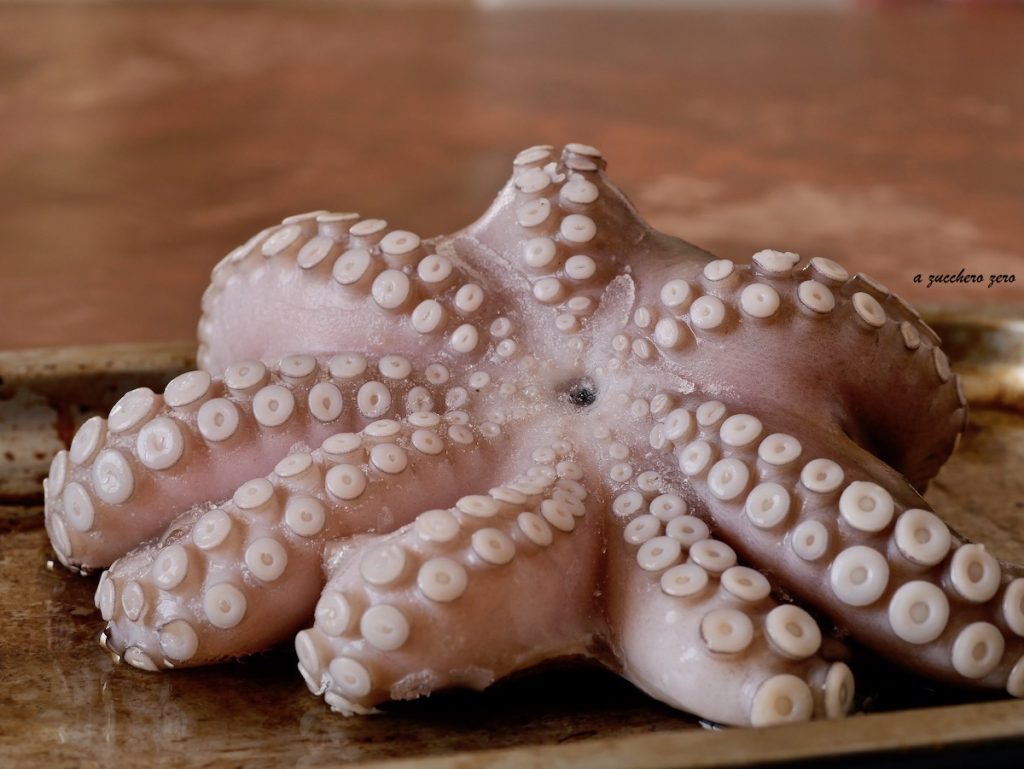
In frozen and defrosted octopuses, the head is already gutted while in fresh octopus, the innards must be removed.
Wash the octopus under running water.
I use an IMCO pot, a precious gift from my mother-in-law, which allows cooking with the flame off.
In the IMCO pot or a traditional pot, bring plenty of water to a boil: it must completely cover the octopus.
Dip the octopus 3-4 times into the boiling water: this step helps curl the tentacles.
Submerge the octopus completely in water.
Add about a shot glass of red wine and – if available – some bay leaves.With IMCO pot
Cover with the lid and bring to a boil.
When a thread of steam comes out, turn off the flame.With traditional pot
Continue cooking on low heat.Whichever pot you use
Let it cook for 40 minutes – for a 2-2.7 lbs (1-1.2 kg) octopus.
After 40 minutes, check the octopus’s doneness by piercing a tentacle with a fork.
Let the octopus cool in the cooking water so the skin remains intact.Remove the octopus from the pot.
Your soft and tender octopus to perfection with whole skin is ready.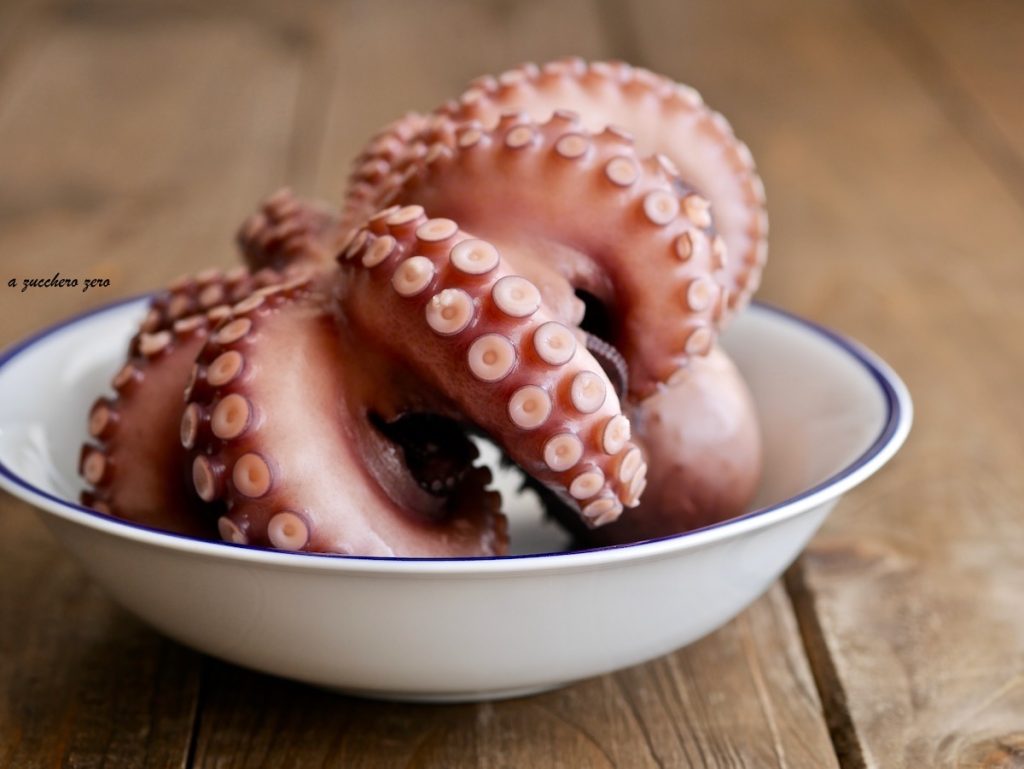
You can keep or remove the skin; I only remove the skin from the thick part where the tentacles attach.
You can use the boiled octopus whole or cut it into pieces as a base for numerous recipes – appetizers, first or second courses – including delicious octopus salads.
Classic and light dressing:
– a pinch of salt;
– a pinch of pepper;
– chopped parsley;
– lemon juice;
– a drizzle of extra virgin olive oil.Dressing with salmoriglio sauce:
– Salmoriglio sauce: Sicilian dressing, a raw and fragrant condiment perfect for enhancing fish after cooking.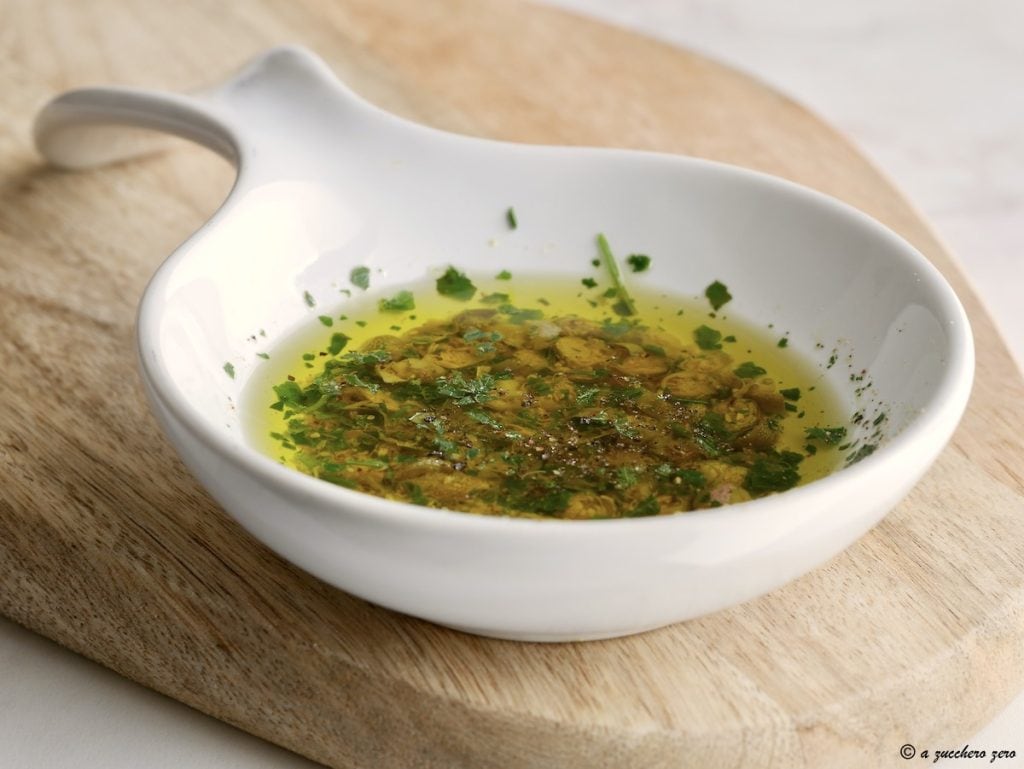
Plate it.
Enjoy your meal!
Storage, Tips, and Variations
Boiled octopus keeps in the fridge in an airtight container for 1-2 days and in the freezer for up to 3 months.
It’s perfect for taking outdoors, in a thermal container or cooler bag.
FAQ (Questions and Answers)
Should the octopus be salted during cooking?Salt can make the fibers tougher.
Add salt at the time of seasoning.Shellfish and Cholesterol
In our dietary pattern, calamari and squid, octopus and cuttlefish, are among the foods indicated as “to be consumed occasionally”.
In fact, although these are mollusks with lean meats, they are a source of cholesterol, which needs to be limited.
Nutritional guidelines recommend a dietary intake of cholesterol below 300 mg a day, which may drop to 200 mg a day in the presence of hypercholesterolemia and hyperglycemia.
Therefore, octopus does not directly affect blood sugar, but in cases of hyperglycemia, prediabetes, and type 2 diabetes it should be consumed in moderation.